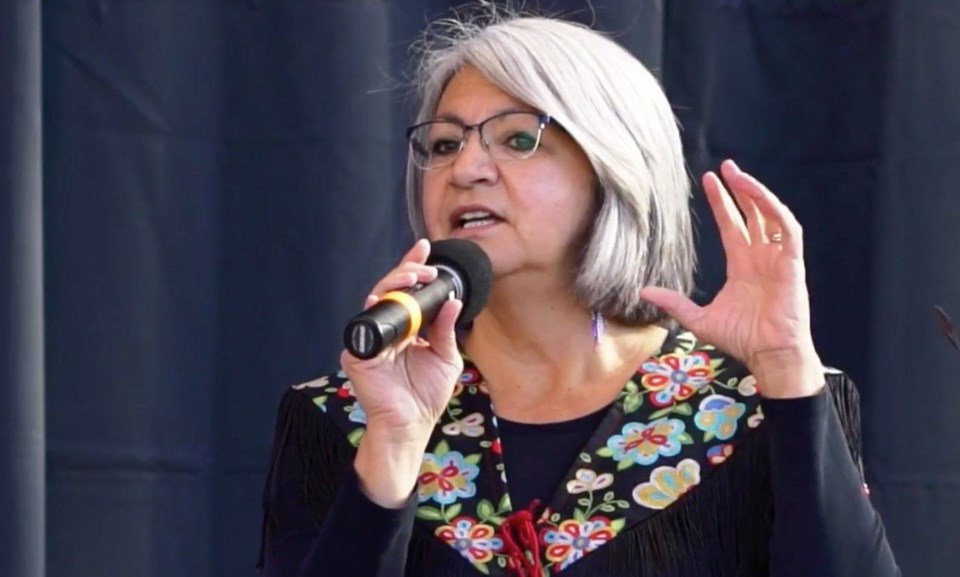When it comes to listing the positives of Indigenous tourism, the economic benefits are frequently top of mind.
But Shae Bird, the executive director of Indigenous Tourism Alberta, believes it’s also vital to consider another benefit.
“Indigenous tourism obviously has huge economic benefits,” Bird said, “but we also see such an incredible amount of social benefits that come with Indigenous tourism and, I would say, even more so than economic.”
Bird was responding to the keynote address delivered by Donna Webster during the Indigenous Tourism Alberta virtual summit held Nov. 4.
Webster, the executive director of the Lac La Biche Canadian Native Friendship Centre, spoke about the social impacts of Indigenous tourism, weaving in stories of her personal life and current programs being offered by the centre.
“(The) impact is going to affect our people differently,” she said. “It is going to give them identity. It is going to give them the opportunity to tell their stories and people are going to listen to it and be in awe.”
The Friendship Centre in Lac La Biche offers camping experiences in tipis for visitors in nearby Sir Winston Churchill Provincial Park.
These camping experiences have proven successful thanks to various partnerships, including one with Alberta Parks, which enables guests to book reservations on its website.
Other partners who have assisted with the camping experiences are members of Beaver Lake Cree and Heart Lake First Nations, as well the Métis settlements of Kikino and Buffalo Lake.
“We are telling our story and we have people coming here wanting to learn our story,” Webster said of the various Indigenous experiences, including culinary ones, offered by the friendship centre.
“We have a lot to share. We have a lot of stories. And all of you sitting here developing your Indigenous tourism can do that. It’s your stories that are going to get passed on.”
While she was growing up, Webster recalled she was not able to learn much about her Indigenous ancestry.
Webster, who has been in her current position since 2006, started researching her background 20 years ago.
That’s because she certainly didn’t learn it in school, where she was taught about other cultures.
“I could build you the best Aztec village you could ever see because that’s what was taught to me,” she said. “When I went to school there was no pictures of Indigenous people eating bannock, eating dried meat, grandmothers canning.”
That is why whenever Webster does PowerPoint presentations these days, she purposely includes a picture of her grandmother canning.
“We had Dick and Jane, very white, blue-eyed and the dog’s name was Spot,” she said. “Those are the images I grew up with.”
Webster believes those who operate Indigenous tourism businesses can have successful companies.
“Indigenous tourism is going to take a different twist,” she said. “And it’s already moving really quickly.
“Prior to COVID and where we are today, Indigenous Tourism Association of Canada shared that they had an increase in employment of over 46 per cent in one year.”
Webster believes those businesses that do survive the pandemic will eventually be able to have plenty of success in the future as there is a thirst to learn about Indigenous culture.
“Those are going to be the social impacts,” she said. “And for me personally, I see it as an opportunity for us to tell our story.”
Bird echoed the sentiment that the Indigenous tourism industry can be prosperous in the future. Especially if younger generations get involved.
“Indigenous tourism is very much in the developmental stages,” Bird said. “So, we have to engage our youth to provide the workforce for the future.
“That workforce training and labour force training aspect of engaging the youth is such a huge benefit for Indigenous tourism across the province.”
Bird believes many of those in Indigenous tourism businesses have a similar line of thinking. They’re not just looking to make money.
“When you look at motivators for communities or Indigenous entrepreneurs, those motivators aren’t typically financially focused,” he said. “They’re focused on how does it give back to the community, how does it give back to the youth, how does this support the Elders?”
And that’s why it’s not just economic impacts that should be focused on.
“Social impacts and the social value is, I would argue, one of the largest outputs of Indigenous tourism or by-products of it,” Bird added.
Sam Laskaris, Local Journalism Initiative Reporter
Read more from www.cjwe.ca



